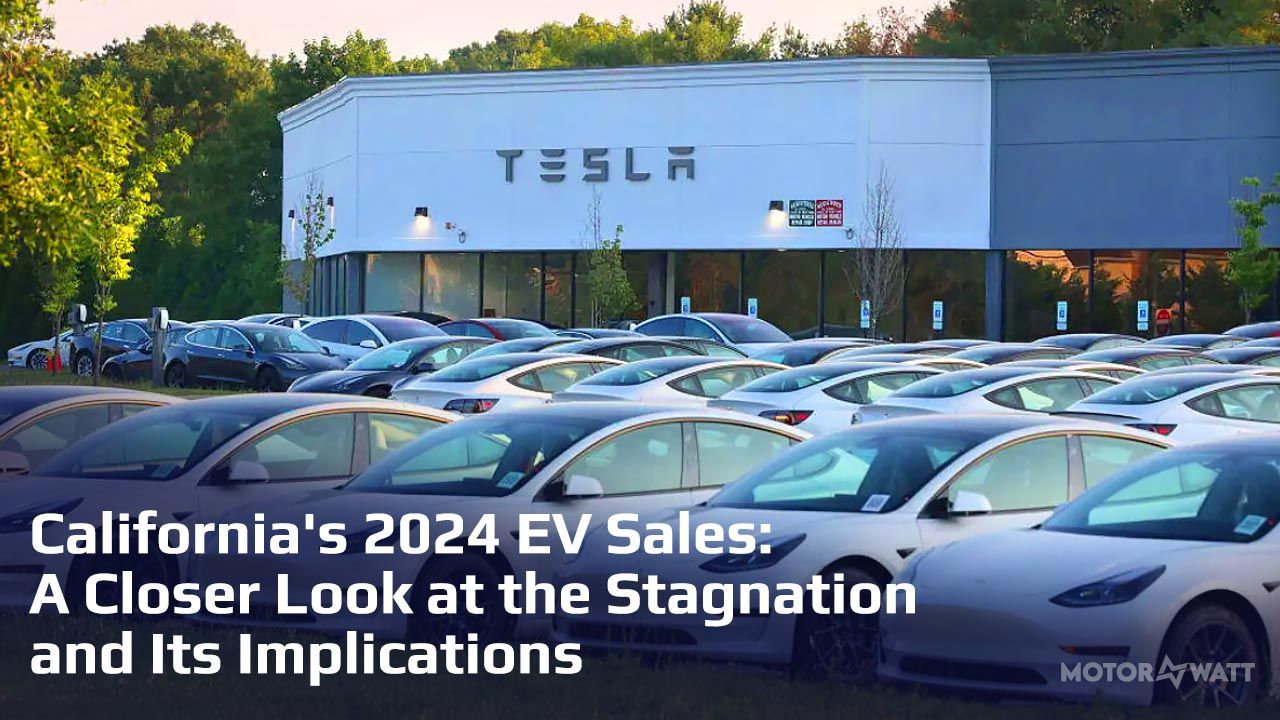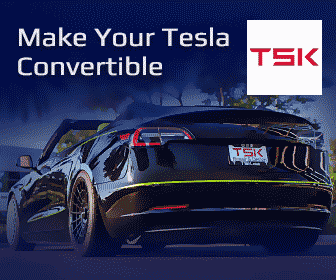California's 2024 EV Sales: A Closer Look at the Stagnation and Its Implications
Share this article in Social Media:

In 2024, California’s electric vehicle (EV) landscape presented a picture of modest growth. EVs accounted for 25.3% of new auto registrations, a small rise from 25% in the preceding year. While the growth represents movement in the right direction, it starkly contrasts with California’s ambitious blueprint, which envisages that a whopping 35% of new car sales will be zero-emission vehicles (ZEVs) by 2026, steadily increasing to 100% by 2035.
What lies beneath this stagnation, and what do these implications mean for California’s clean-energy aspirations?
Here are some key points:
- EV market share grew only slightly to 25.3% in 2024.
- The state aims for 100% ZEV sales by 2035.
Increased Competition: Impact on Tesla’s Market Share
Tesla has often been synonymous with California’s EV market. However, in 2024, the electric vehicle giant felt the squeeze of competition. Tesla’s car sales witnessed a significant dip, falling by 11.6%, which translates to roughly 27,000 fewer cars making it off the lot compared to 2023. As rivals rolled out new EV models, each vying for consumer dollars, Tesla’s market clout shrank from an imposing 60% to 52.5%. This shift results from consumers exploring the plethora of choices now available.
Key takeaways:
- Tesla's market share dropped from 60% to 52.5%.
- About 27,000 fewer Tesla vehicles were sold compared to 2023.
Hybrid Vehicles Gaining Traction
While fully electric vehicles experienced stagnation, hybrid cars seemingly gained ground, resonating with consumer inclinations for fuel efficiency. Alternative powertrain registrations expanded to 40.2% in 2024, with hybrids specifically enjoying a 2.4 percentage point surge in the last quarter. What does this signify? It suggests that while some consumers feel the allure of fully electric vehicles, many remain tempted by the energy efficiency and appeal of hybrids.
Highlights include:
- Hybrid vehicles saw a 2.4 percentage point increase in registrations.
- Alternative powertrains account for 40.2% of 2024 car sales.
Infrastructure and Policy Challenges
Despite California surpassing a grand total of 2 million cumulative EV sales by mid-2024, the state grapples with infrastructural deficiencies. Over 91,000 public and shared chargers, including nearly 10,000 direct current fast chargers, stand installed. However, forecasts indicate a necessity for more than 1 million non-private chargers by the decade’s close to accommodate the burgeoning EV populace. This significant charge infrastructure gap lies at the heart of many of the state’s current EV adoption frustrations.
Key points:
- Approximately 91,000 public chargers are available as of 2023.
- More than 1 million non-private chargers needed by 2030.
Implications for Future EV Adoption Targets
What does the hesitation in EV sales mean for California’s lofty aspirations? Bridging the existing chasm between the salespersonality figures and the future goals necessitates proactive measures. This could involve everything from bolstering consumer incentive schemes, pouring investment into charging infrastructure, to collaborating with automakers to expand the range of economically viable EV options.
Key considerations:
- California may need more consumer incentives for EVs.
- Partnerships with automakers could increase affordable EV options.
Hybrid Appeal Over Full Electrification: What’s Driving the Shift?
Why are hybrids seeing a resurgence when fully electric options are supposed to be the future? The answer lies in an intricate mix of practicality, cost-effectiveness, and infrastructure comfort. Many consumers remain wary of the constraints associated with charging station availability or the duration required for full charges. Until infrastructure catches up, hybrids present a palatable compromise for drivers wanting efficiency without the charging headache.
Driving forces include:
- Hybrids offer a practical blend of fuel efficiency and reliability.
- Infrastructure lag leads consumers to choose practical options.
The Road to 35% ZEV Sales by 2026
With a goal set to achieve 35% ZEV sales by 2026 fast approaching, questions about feasibility abound. While the numbers might seem daunting, the plan is not devoid of success potential. Industry stakeholders are challenging traditional paradigms, enhancing vehicle affordability, and prioritizing consumer engagement. Collaboration among government bodies, businesses, and communities remains paramount in crossing the finish line.
Strategic steps include:
- Stakeholder engagement to promote ZEV adoption.
- Enhancing EV affordability and consumer awareness.
California’s Blueprint: Pioneering the EV Charge
As we digest marketplace intricacies, it's apparent that successful adaptation is more art than science. California’s path as a frontrunner in the EV epoch is set by navigating roadblocks and capitalizing on opportunities. Realizing the vision of 100% ZEV sales by 2035 requires nimble problem-solving, relentless innovation, and an unwavering focus on sustainable mobility.
Pioneering efforts should focus on:
- Innovative solutions for unresolved infrastructure challenges.
- Aligning strategies with evolving consumer expectations.
Conclusion: Accelerating Toward a Cleaner Future
In sum, the trajectory of California’s EV growth story is peppered with challenges yet to be overcome. However, through strategic infrastructure development, mobilization of consumer incentives, and collaborative industry action, the state can maintain its pioneering role in sustainable transportation. The journey is a combined marathon and sprint, where the stakes couldn’t be higher, and the prizes more vital.
In summary, a forward-facing, innovative approach matches with an unwavering commitment to green transportation results in a future California can not only envisage but boldly bring to fruition.











